 W
WThe Allodapini is a tribe of bees in the subfamily Xylocopinae, family Apidae. They occur throughout sub-Saharan Africa, South East Asia, and Australasia. There is also a rare genus, Exoneuridia, that occurs in isolated regions of Turkey, Iraq, Lebanon and Iran.
 W
WAncylaini is a tribe of apid bees. The name was fixed by an ICZN opinion to differentiate it from the Ancylini tribe of fresh-water molluscs.
 W
WThe Anthophorini are a large tribe in the subfamily Apinae of the family Apidae. Species in this tribe are often referred to as digger bees, although this common name is sometimes also applied to members of the tribe Centridini. It contains over 750 species worldwide, all of which were previously classified in the obsolete family Anthophoridae along with members of several other tribes; the vast majority of species in the tribe Anthophorini are in the genera Amegilla and Anthophora.
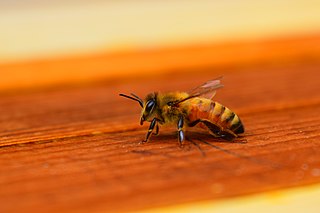 W
WA honey bee is a eusocial flying insect within the genus Apis of the bee clade, all native to Eurasia. They are known for their construction of perennial colonial nests from wax, the large size of their colonies, and surplus production and storage of honey, distinguishing their hives as a prized foraging target of many animals, including honey badgers, bears and human hunter-gatherers. Only eight surviving species of honey bee are recognized, with a total of 43 subspecies, though historically 7 to 11 species are recognized. Honey bees represent only a small fraction of the roughly 20,000 known species of bees.
 W
WThe Bombini are a tribe of large bristly apid bees which feed on pollen or nectar. Many species are social, forming nests of up to a few hundred individuals; other species, formerly classified as Psithyrus cuckoo bees, are brood parasites of nest-making species. The tribe contains a single living genus, Bombus, the bumblebees, and some extinct genera such as Calyptapis and Oligobombus. The tribe was described by Pierre André Latreille in 1802.
 W
WThe Centridini are a tribe of large apid bees, many of which possess adaptations for carrying floral oils rather than pollen or nectar. The floral oils are often gathered from plants of the family Malpighiaceae, though other plants may be visited. The oil-collecting species typically have "combs" composed of closely spaced, flattened, blunt bristles on the margins of the first tarsal segments of the front and middle legs; others may have velvety "pads" to absorb the oils. They also commonly gather plant resins for use in nest cell construction. They have a tiny pterostigma in the forewing, the female scopa is very bushy, and the first flagellomere of the antenna is often longer than the scape.
 W
WThe cosmopolitan bee genus Ceratina, often referred to as small carpenter bees, is the sole lineage of the tribe Ceratinini, and closely related to the more familiar carpenter bees. They make nests in dead wood, stems, or pith, and while many are solitary, a number are subsocial, with mothers caring for their larvae, and in a few cases where multiple females are found in a single nest, daughters or sisters may form very small, weakly eusocial colonies. One species is unique for having both social and asocial populations, Ceratina australensis, which exhibits all of the pre-adaptations for successful group living. This species is socially polymorphic with both solitary and social nests collected in sympatry. Social colonies in that species consist of two foundresses, one contributing both foraging and reproductive effort and the second which remains at the nest as a passive guard. Cooperative nesting provides no overt reproductive benefits over solitary nesting in this population, although brood survival tends to be greater in social colonies. Maternal longevity, subsociality and bivoltine nesting phenology in this species favour colony formation, while dispersal habits and offspring longevity may inhibit more frequent social nesting in this and other ceratinines.
 W
WThe bee tribe Ctenoplectrini of the subfamily Apinae, with the two genera Ctenoplectra and Ctenoplectrina, comprises 9 species in tropical Africa, 10 in Asia, and 1 in Australia.
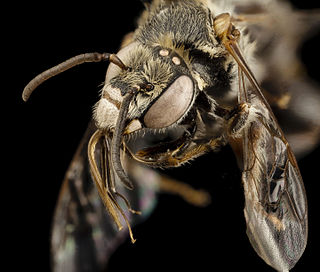 W
WThe Emphorini are a tribe of apid bees.
 W
WThe Ericrocidini are a tribe of apid bees.
 W
WThe Eucerini are the most diverse tribe in the family Apidae, with over 32 genera worldwide that were previously classified as members of the family Anthophoridae. All species are solitary, though many nest in large aggregations, and large "sleeping" aggregations of males are found occasionally. Most genera are distinctive in the unusually long male antennae from which the tribe derives its name. They are most diverse in the Western Hemisphere.
 W
WThe tribe Euglossini, in the subfamily Apinae, commonly known as orchid bees or euglossine bees, are the only group of corbiculate bees whose non-parasitic members do not all possess eusocial behavior.
 W
WThe Exomalopsini are a tribe of bees in the family Apidae. They are tiny to moderate in size and usually hairy. The abdomen often has pale banding. They can be distinguished from other tribes by a line of hairs along the inner edge of the eye.
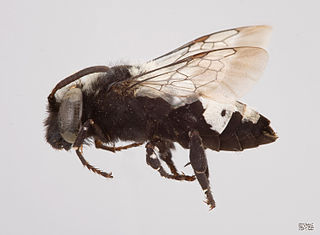 W
WThe Isepeolini are a tribe of apid bees.
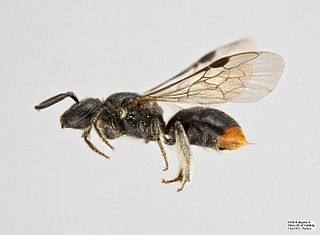 W
WManuelia is a genus of bees in the subfamily Xylocopinae, the only genus in the tribe Manueliini. There are three species.
 W
WMegachilini is a tribe of leaf-cutter and resin bees.
 W
WThe Melectini are a tribe of medium- to large-sized apid bees found essentially worldwide. They are brood parasites of the related typical digger bees (Anthophorini) and occasionally visit flowers e.g. in prairie landscapes of the United States.
 W
WStingless bees, sometimes called stingless honey bees or simply meliponines, are a large group of bees, comprising the tribe Meliponini. They belong in the family Apidae, and are closely related to common honey bees, carpenter bees, orchid bees, and bumblebees. Meliponines have stingers, but they are highly reduced and cannot be used for defense, though these bees exhibit other defensive behaviors and mechanisms. Meliponines are not the only type of "stingless" bee; all male bees and many female bees of several other families, such as Andrenidae, also cannot sting. Some stingless bees have painful and powerful bites.
 W
WThe Osirini are a tribe of cleptoparasitic apid bees, all but one genus exclusively from the Neotropics, and laying their eggs in the nests of bees in the apid tribe Tapinotaspidini; the one exceptional genus is Epeoloides, which has one North American species and one European species, both of which attack the melittid genus Macropis.
 W
WThe Protepeolini are a tribe of apid bees. The tribe contains only one genus, Leiopodus.
 W
WThe Rhathymini are a tribe of apid bees.
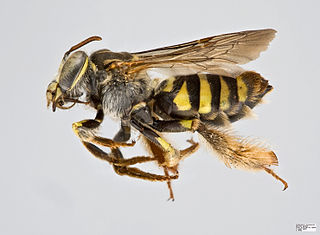 W
WThe Tapinotaspidini are a tribe of apid bees.
 W
WThe Tetrapediini are a tribe of apid bees.
 W
WCarpenter bees are species in the genus Xylocopa of the subfamily Xylocopinae. The genus includes some 500 bees in 31 subgenera. The common name "carpenter bee" derives from their nesting behavior; nearly all species burrow into hard plant material such as dead wood or bamboo. The main exceptions are species in the subgenus Proxylocopa; they dig nesting tunnels in suitable soil.